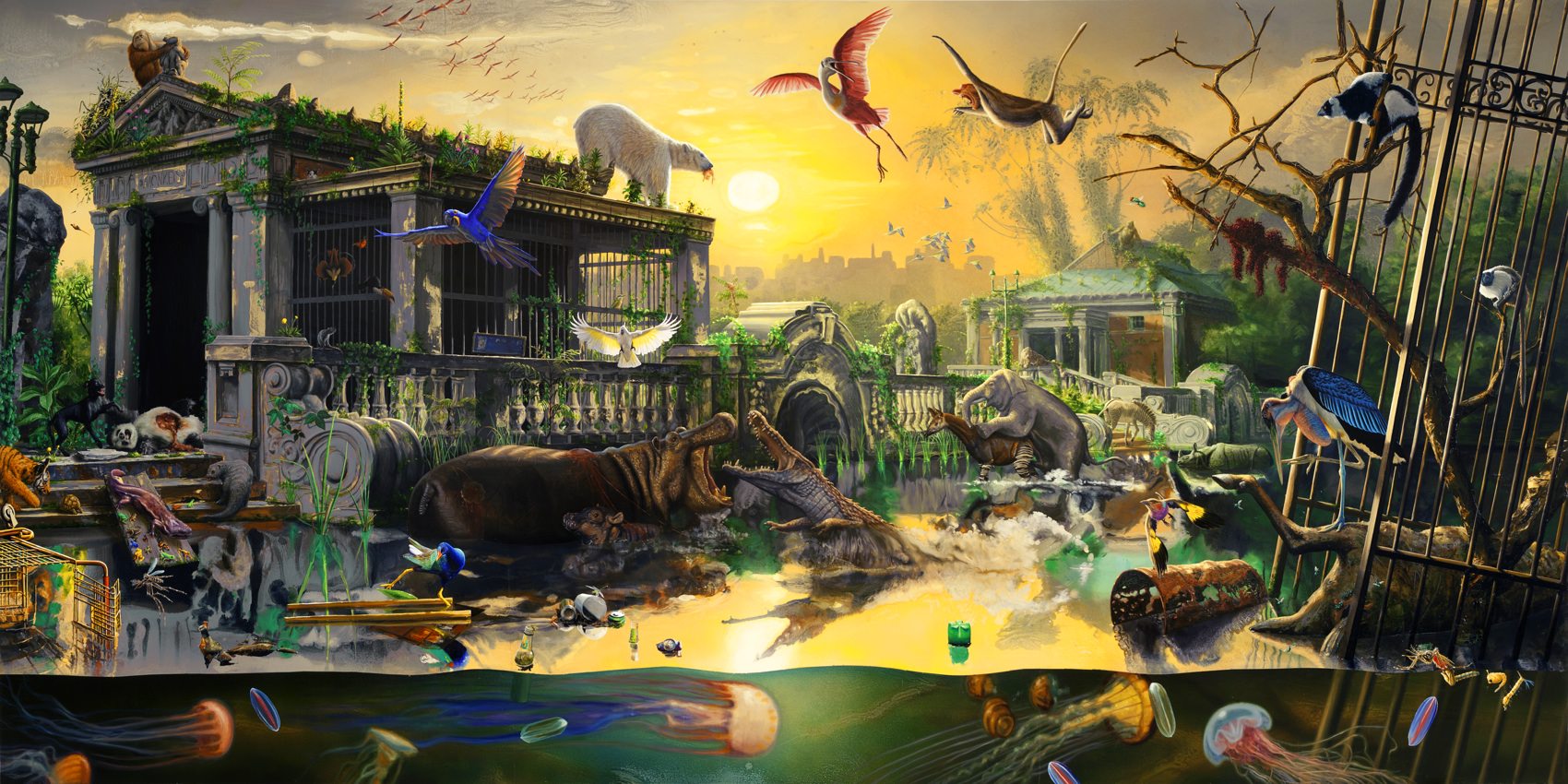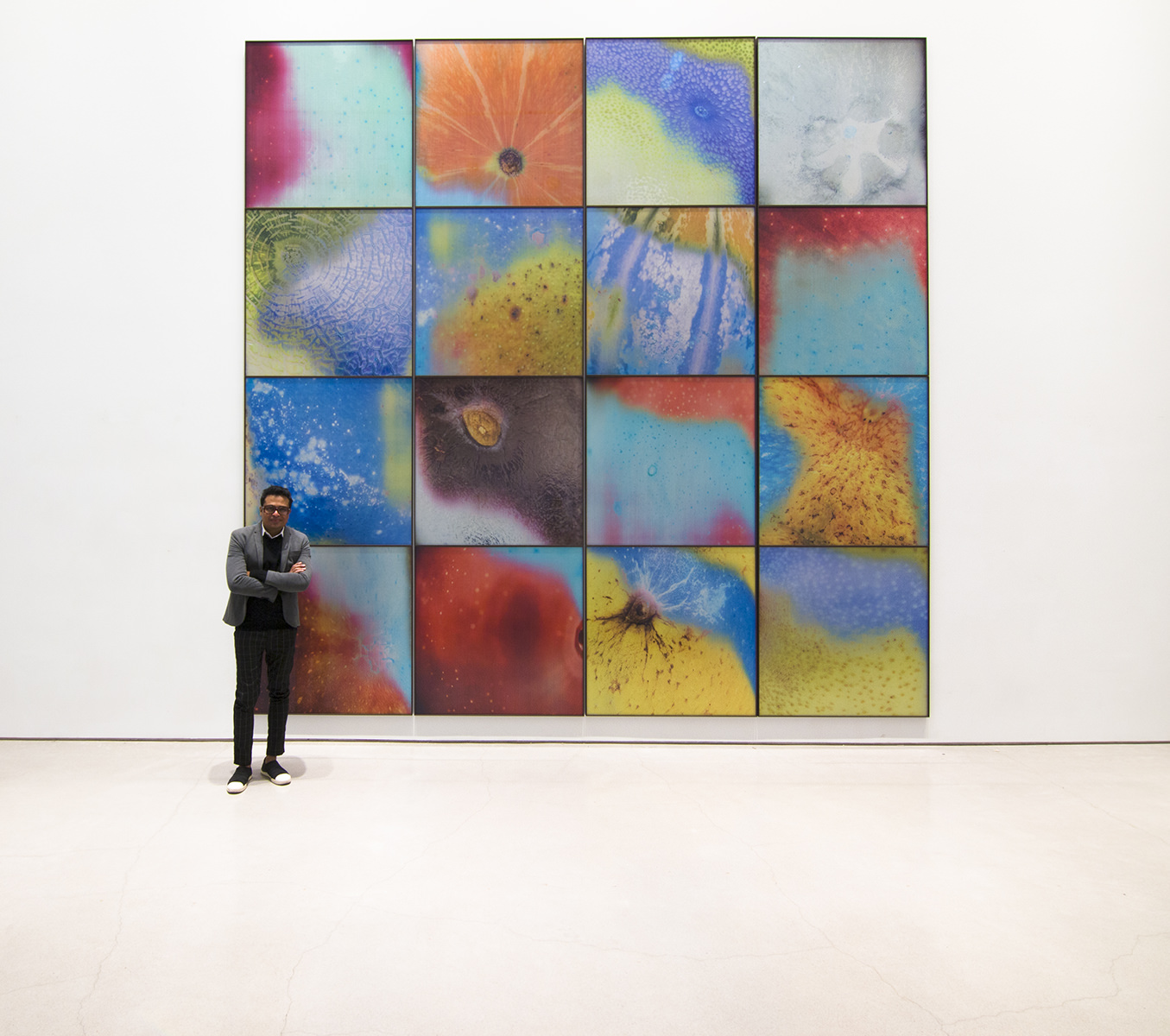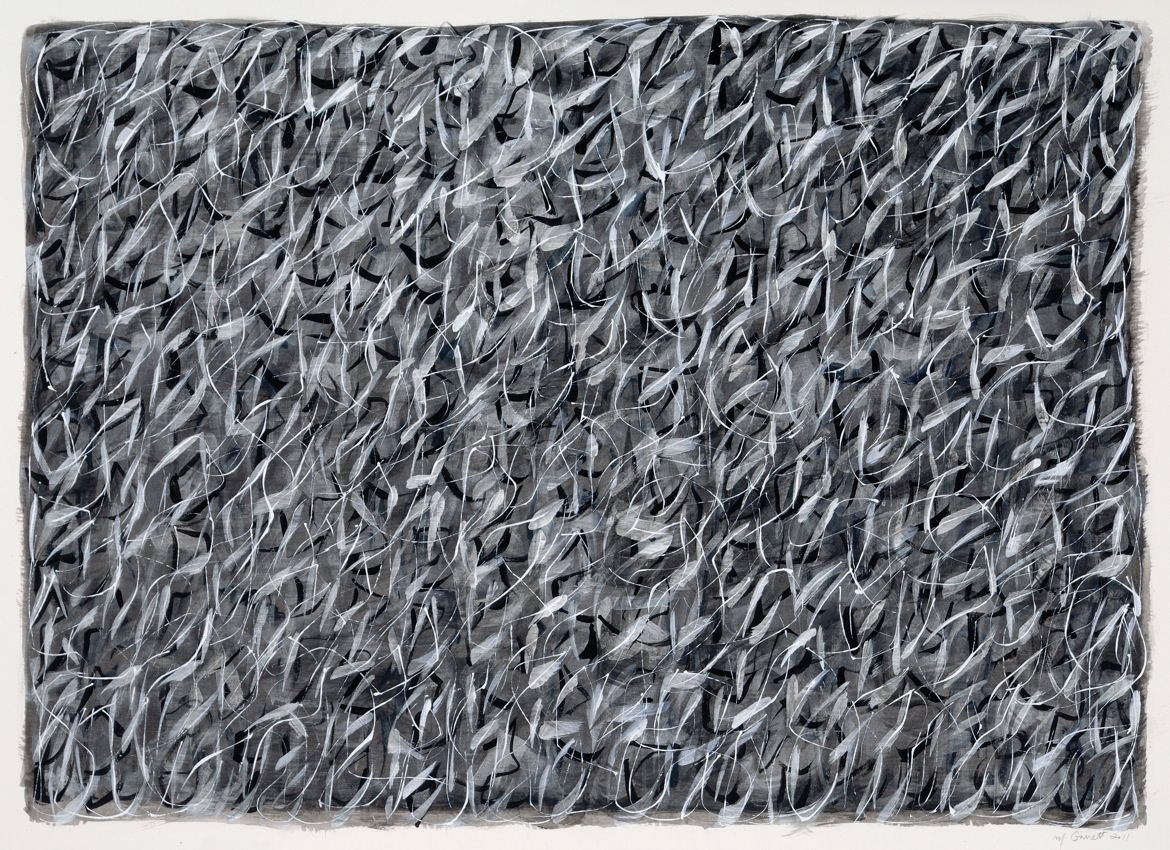Editorial Note: The complete interview with Nabil Nahas will be in Whitewall’s summer 2013 Design Issue out in June. Below is an excerpt from the feature.
Nabil Nahas is a delight. We met with him early this year at his studio in Chelsea, overlooking the Hudson, as he was putting the finishing touches on his solo show at Sperone Westwater (on view through May 4). He was working on three different types of paintings. The first is what he calls his “Fractal” series, three-dimensional paintings made with acrylic and pumice paint that looks as though it’s organically grown, almost like coral. The second stems from the fractals but is somewhat more exuberant, more combustible, with sweeping lines, swirling circles, bright spots, and contrasting colors. Nahas describes them as “energy fields.” The third appears to be a complete departure: paintings of olive trees from his garden in Lebanon, made with deft, confident brushstrokes. While the fractals and energy fields are more hypnotic, the tree paintings are simply beautiful.
Nahas has lived in New York for more than forty years, but he grew up between Cairo and Lebanon. While sipping espresso and rolling around his studio on ergonomic office chairs, we talked (and laughed) about his newest paintings and how he lets his subconscious guide him from series to series.
WHITEWALL: Looking around your studio, it seems that works like Peekaboo and Inka Dinka Doo are a little different from your previous “Fractal” series. How did you get to them?
NABIL NAHAS: Well, the paintings which I refer to as the “Fractal” paintings started a while ago, but they’re getting more and more sophisticated with the color.
The newer ones, which are more . . . how should I call them? There is something very cosmic about these [laughs]. I started these last year when I started introducing drawing into these pictures, and it took over. They become like fields of energy with contradicting things happening.
All this work is really about process and perception because a lot of it happens optically; it’s in your retinas. People think I use fluorescent colors, but I never do that. What I do is when you take complementary colors, you can really charge them optically to the point where they start creating afterimages. It becomes very, very intense. It’s like electrifying the color, which I find very interesting. And for that I don’t have any system; I do it instinctively.
When I look at the early line paintings, which I did in the seventies, I was already fooling around with that. It’s the same principle.
WW: We read that while you were doing geometric paintings in the seventies, all of a sudden you started painting black canvases. You thought, “What is happening?” But you kept going with it. Do you always let your subconscious be your guide in painting?
NN: Yeah, I remember that. The paintings were beginning to disintegrate; the geometric ones were getting much softer, and then one day I had the black canvas. I let it go and it was like somebody was holding my hand. I left those geometric paintings, and got into the black-and-white paintings from ’81 and ’82. Then they turned into gold.
WW: Where do you think your energy in these newest works comes from?
NN: My espresso machine [laughs]. I don’t know, I really don’t know. It’s funny, I’m not exactly a sloth, but I’m slow [laughs]. I’m slow, but I want things done instantly. I think it actually comes form the compilation of the different elements that are fighting each other and coexisting with each other at the same time. I think the energy comes from the overload of information I’m giving you to digest. There’s like five different things going on at the same time, and I think they start jumping in your brain like a pinball machine.
But what’s interesting and what’s curious is that the more I load the paintings with information, the clearer the picture gets. There’s no confusion there. Everything is very clear and very readable. There comes a point where suddenly everything is very clarified.










